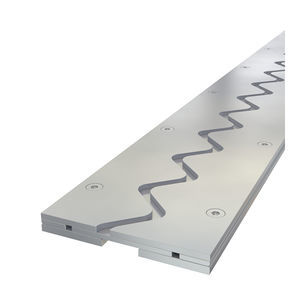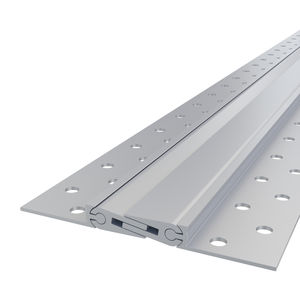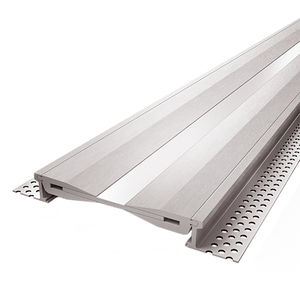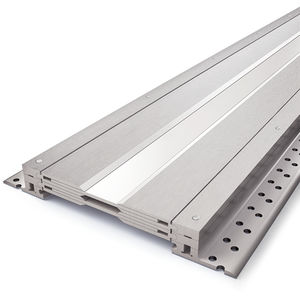
- Flooring & Wallcovering
- Tile, Mosaic
- Aluminum expansion joint
- GV2 VEDA FRANCE
Aluminum expansion joint JDH 6.22for floorfor flooringfor flooring screed

Add to favorites
Compare this product
Characteristics
- Material
- aluminum
- Applications
- for floor, for flooring, for flooring screed, for building, concrete floor slab, for concrete structures
- Other characteristics
- seismic, waterproof, fireproof
Description
Product compatible with our fire protection solutions and our waterproofing membranes
COLOUR :
NATURAL
VERSION :
FLAT AND ANGLE
CHARACTERISTICS :
Seismic expansion joint
For wide movements : 50 %
For joint gaps from 50 to 200 mm
Seismic expansion joint for wide seismic movements that comprises side angle sections and a central plate made of aluminium. It is able to take up large expansion and contraction movements, as well as vertical shearing movements, and is also suitable for all types of finish: concrete, screed, tiling, etc.
The JDH 6.22 seismic expansion joint and fire stop expansion joint can be used for indoor and outdoor floor joints where a gap of up to 200 mm, with significant movement, is present. It is suitable for pedestrian and light trolley traffic.
The JDH 6.22 seismic expansion joint comes in 3m section lengths, and features aluminium side angle sections and middle plate.
VEDA’s JDH 6.22 range includes floor-to-floor (JDH 6.22) and floor-to-wall (JDH 6.22A) versions, with anti-slip ribbed surfaces. Optional waterproof membranes, with the potential to integrate a drainage system to recover liquid, are also available. Moreover, the JDH 6.22 seismic expansion joint range can be used in association with vertical joints that offer the same finish and movement range (type JDV 4.02 or other).
Catalogs
THE RANGE
64 Pages
Exhibitions
Meet this supplier at the following exhibition(s):

Related Searches
- Trim board
- Expansion joint
- Aluminum trim board
- Metal expansion joint
- Aluminum expansion joint
- Floors expansion joint
- Transition profile
- Wall-mounted expansion joint
- Flooring expansion joint
- Stainless steel edge trim
- Drive-over expansion joint
- Step trim board
- Silver-colored edge trim
- Waterproof expansion joint
- Seismic expansion joint
- Stainless steel expansion joint
- Rubber expansion joint
- Plastic expansion joint
- Stair nosing edge trim
- Pedestrian expansion joint
*Prices are pre-tax. They exclude delivery charges and customs duties and do not include additional charges for installation or activation options. Prices are indicative only and may vary by country, with changes to the cost of raw materials and exchange rates.

















